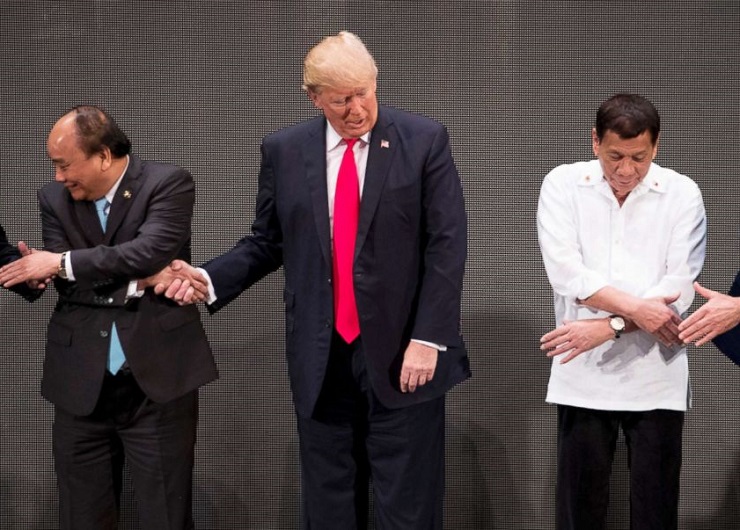The ongoing trade war between the US and China has caused both countries economic damage, leading to lower exports for China (by almost 25%) and higher prices for consumers in the US, but economic and financial losses aren’t the most significant negative aspects. And, whereas both the US and China are beginning to signal a possibility of diffusion in economic tensions through a deal, the real loss, as it stands and continues to unfold, has been geopolitically, particularly in Asia. And, with the US being a power not based in this region,it now faces quickly eroding influence there. China, on the contrary, stands only to gain as US influence wanes.
Therefore, when US President Donald Trump recently said that China “is dying to make a deal” and that its supply chains are breaking and its economy on the verge of a collapse, he certainly didn’t realise how his protectionism was costing the US way more than it was costing China.
The US-China trade war, considered against the backdrop of Trump’s “America First” policy and increasing “protectionism”, was a potential continuation of the same thinking that led, in the very early days of the Trump administration, to the US exit from the Trans Pacific Partnership (TPP). While the Trump administration had initially thought that TPP would be dead after their exit, it has continued to survive in the form of the Comprehensive and Progressive Agreement for Trans-Pacific Partnership, which is very much the same trade-arrangement as the TPP but doesn’t have the US as a member. Signed in March 2018, it’s already in force for seven of the 11 signatories.
Additionally, the TPP, which was to create the biggest trade bloc in the world, is already being replaced by the China-led Regional Comprehensive Economic Partnership (RCEP) trade pact which includes former members of the TPP along with China and is aimed at strengthening trade-relations between China and ASEAN. This explains why the traditional US rhetoric regarding the South China Sea no longer carries any attraction for ASEAN.
With the US thus having sealed itself out of these trade blocs, it has closed on itself doors leading to a major segment of the global economy, which also means that the US will have fewer means of influencing regional geopolitics vis-à-vis its global strategic competitor than would otherwise have been the case.
Indonesia, which is an RCEP member country, is following a policy that doesn’t suit US interests. In fact, it is increasingly defying it. Not only does it not support US “power projection in the [South China Sea] region”, but also disagrees with an approach that relies on a military solution of the issue. The Philippines, an erstwhile US ally, is being increasingly seen as following a similar anti-US approach. In January 2018, when a US Navy guided missile destroyer sailed through the 12 nautical mile territorial sea around the disputed region, the Philippines did not come to support the US. The Philippines, instead of rejecting China’s objections, restorted to describing the matter as “really a problem of America because we have come to a point that we now have an independent foreign policy… The problem of America today is no longer the problem of the Philippines.” Similarly, the position the Philippines took during the recently concluded ASEAN summit also speaks volumes about the way the US is no longer able to maintain its anti-China course with ASEAN alongside it.
The US is already facing such problems on an unprecedented level, even as traditionally strong US allies as Japan are, too, forging trade relations that show how political relations between these allies are no longer the same. In 2018, according to research done by the US Congressional Services, Japan ratified two free trade agreements that clearly seem to shut the US out in significant trade areas.
Done against increasing US protectionism, an FTA between Japan and the EU has already established the world’s biggest free-trade area in terms of GDP. This agreement, unlike a simple FTA, goes well beyond trade and tariffs and provides EU companies with access as suppliers to Japan’s 54 cities. The US, obviously, doesn’t enjoy such access.
It is, therefore, apt to say that the true affect of the ongoing trade war and US protectionism has not been economic, although the US president would want his voters to believe that China’s economy is really “dying.” And, whereas this protectionism has led to tensions between the US and China, it has also steered many of America’s own allies away from the US, forcing them to sign new trade agreements [not necessarily with China] with clear implications for their trade relations with the US. This is apart from the fact that some of America’s closest allies have moved to signing direct agreements with China.
Economically, these agreements would mean fewer opportunities for the US to trade, regardless of whether these agreements involved China or not. Politically, it would mean a fairly decreased US ability to influence regional geopolitics and steer an old policy of ‘containment.’ On the contrary, ASEAN’s trade agreement with China certainly has the potential to ‘kill’ the US in the region.
Salman Rafi Sheikh, research-analyst of International Relations and Pakistan’s foreign and domestic affairs, exclusively for the online magazine “New Eastern Outlook”.

